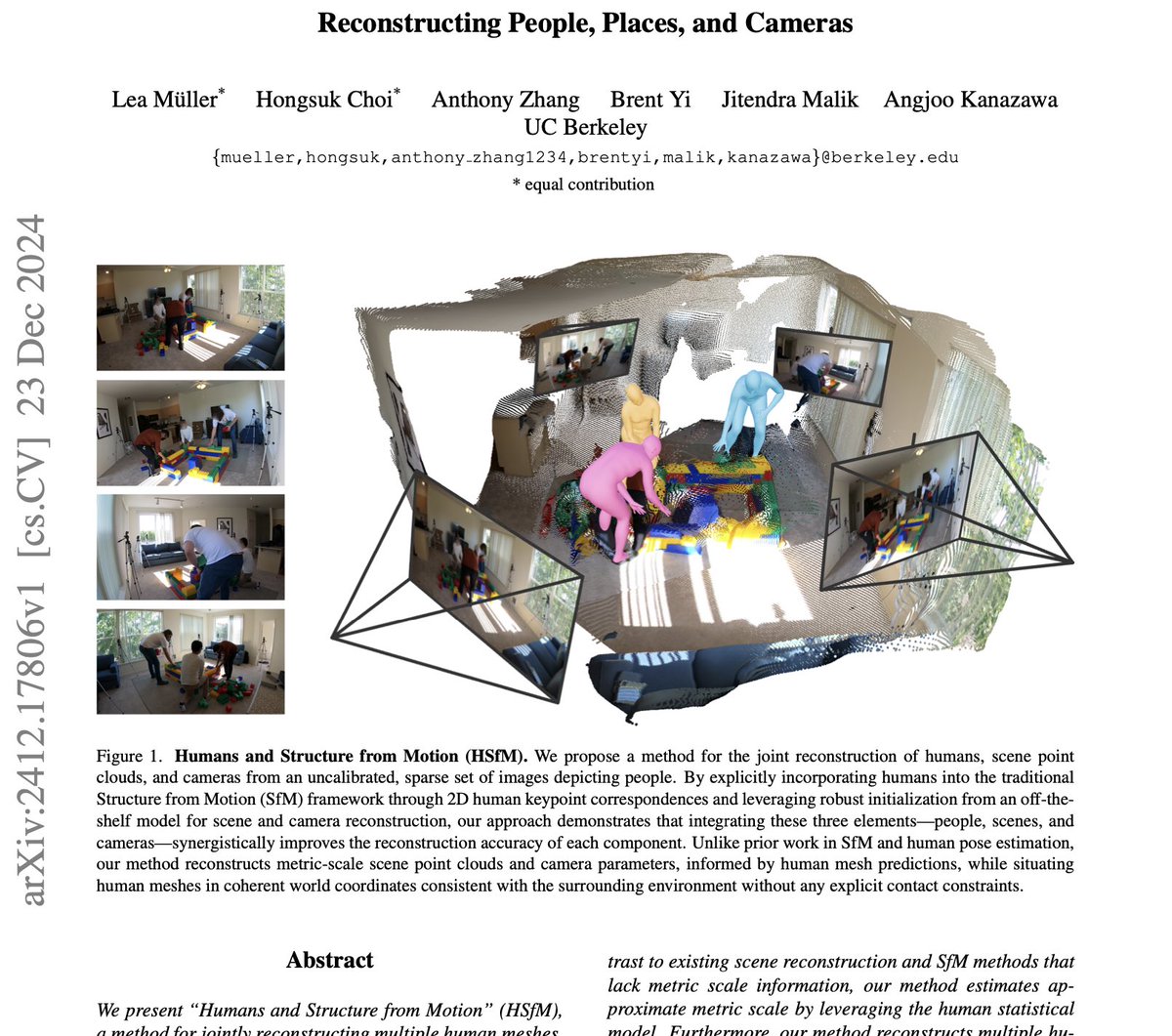
Lea Müller
@LeaMue27
Followers
732
Following
278
Statuses
70
Working on virtual humans - pose/shape/touch to understand human behavior. PostDoc @UCBerkley and PhD @MPI_IS.
Berkeley, CA
Joined July 2020
@BayesianPath Real-time data requires some technical and engineering effort to keep track of people entering and leaving the scene. A dense representation for objects would be great, but integrating NeRFs and point clouds is not straight forward.
1
0
1
@Shoubhik_ Dominant applications besides robotics will probably be in sports and healthcare. Any kind of real-world imitation learning like refining your golf swing. Otherwise, study how humans behave in social scenarios. I think we know very little about this yet.
1
0
1
@howdataworks @_akhaliq Fundamental technique to study human behavior and potentially for humanoid robotics. We hope this inspires lots of follow up work that also includes dense object structure etc.
1
0
1
Still impressed how accurate human pose estimation can be from just a head mounted device. Key contribution are two invariance properties to facilitate learning. Def. worth the read if you work on motion estimation/ generation. Amazing effort @brenthyi, also on the visuals 😍
0
2
26
People at #ECCV2024 interested in social touch come to the ✨ Social Artificial Intelligence ✨Workshop Sunday morning. I’ll be giving a keynote talk covering research in psychology and computer vision. Lovely combo with lots of room for AI 🚀
✮ Pose Priors from Language Models ✮ Synergy and Synchrony in Couple Dances Keynote by @LeaMue27 September 29 (12:30 | Suite 2) + hybrid (this is our fabulous Social-AI workshop. Don't miss it!)
0
1
23
@gutianpei_ @vonekels Great question @gutianpei_ - We indeed looked into datasets collected in the lab like Duolando (nice work btw!). The exciting thing about SynNSync is that it’s scalable and can be applied to any in-the-wild two-person interaction video dataset. That’s why we collected new data.
0
0
1
How can we study human social behavior at scale? 1.) use method that can reconstruct human motion from video (4D). 2.) train a GPT-like network on two people’s body motion. 3.) study the effect of generated motion under varying input information. 👇More info + new dataset👇
To what extent does social interaction affect behavior in couples swing dancing? Our work looks at how we can predict a dancer's next moves based on their past motion alone or by considering both the dancer's and their partner's motions. 🪩🕺🏾 🆚 🪩🕺🏾💃🏾 🧵1/6
0
0
27
In den USA können Verträge über mehrere Million Dollar digital unterschrieben werden, während in Deutschland selbst ein Gastvertrag postalisch geschickt werden muss. Ist Entbürokratisierung wirklich so schwer umsetzbar? Es ist einfach frustrierend! @MarcoBuschmann
1
0
8
RT @shiryginosar: Join us next week at our second (high-level) intelligence workshop @SimonsInstitute! Schedule:
0
9
0
We will present BUDDI today at #CVPR in the morning poster session. I can’t attend in person this year, but you will meet my amazing co-author @vickie_ye_ to give you a walk through and answer your questions. You‘re also welcome to reach out via email.
0
3
33
I can't wait for the next gen. movies with lots of cotton candy. Looks amazing! Congratulations to the amazing @LumaAI Team!!
7) Prompt: Cinematic style shot of a cotton candy explosion This generation has some slight morphing, but I love the soldiers running out of the explosion at the end
0
0
6
Exciting to see how 3D reconstruction turns into products making our world better ❤️🩹 Great effort @FrederikWarburg and team.
Our Head of AI @FrederikWarburg wrote about some of our recent AI efforts, if you are interest in spatial 3D intelligence check it out! 📰Blogpost: If you find this interesting we are expanding the team -
0
0
6
@adaobiaichain I really like the insight that with the number of samples/prompts the 3D joint error goes down and contact improves:
0
0
0
@adaobiaichain Our approach is training free and especially improves contact metrics. We couldn’t beat methods trained with human-labeled contact data. But it’s just a matter of time for LMMs to catch up.
0
0
0










